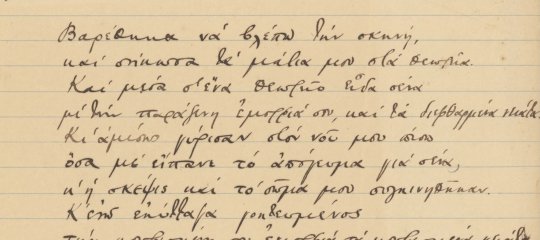Αναρτήθηκε στις Ψηφίδες του Κέντρου Ελληνικής Γλώσσας η Επιτομή του Μεγάλου Λεξικού της Αρχαίας Ελληνικής Γλώσσας των H.G. Liddell & R. Scott
Αναρτήθηκε στις http://www.greek-language.gr/digitalResources/index.html Ψηφίδες του Κέντρου Ελληνικής Γλώσσας η Επιτομή του Μεγάλου Λεξικού της Αρχαίας Ελληνικής Γλώσσας που αποτελεί ψηφιακή έκδοση σε βάση δεδομένων του Ενδιάμεσου Λεξικού της Αρχαίας Ελληνικής Γλώσσας (An Intermediate Greek-English Lexicon, 1889) των H. G. Liddell & R. Scott, όπως κυκλοφόρησε εκσυγχρονισμένο σε νεοελληνική μετάφραση το 2007 από τις εκδόσεις «Πελεκάνος». Η ψηφιακή έκδοση καθιστά πολύ πιο εύχρηστο το λεξικό, ενώ η δυνατότητα αναζήτησης στο σώμα του λήμματος με λέξεις-κλειδιά ή συντομογραφίες επαυξάνει τις δυνατότητές του και το κάνει ένα χρησιμότατο εργαλείο για τη μελέτη της αρχαίας ελληνικής. Επιπλέον, η σύνδεσή του με τα άλλα λεξικά της «Πύλης για την ελληνική γλώσσα» και η δυνατότητα συνδυαστικής αναζήτησης σε όλα μαζί θα δίνει στο χρήστη ένα πανόραμα των σημασιών της λέξης που τον ενδιαφέρει από την αρχαιότητα έως σήμερα. Είναι αυτονόητο ότι πρόκειται για έργο χρησιμότατο που απευθύνεται τόσο στην εκπαιδευτική κοινότητα, όσο και στο ευρύ κοινό. Το παραπάνω έργο του ΚΕΓ υλοποιήθηκε στο πλαίσιο του Επιχειρησιακού Προγράμματος «Εκπαίδευση και Δια Βίου Μάθηση» και συγχρηματοδοτήθηκε από την Ευρωπαϊκή Ένωση (Ευρωπαϊκό Κοινωνικό Ταμείο) και από εθνικούς πόρους.










